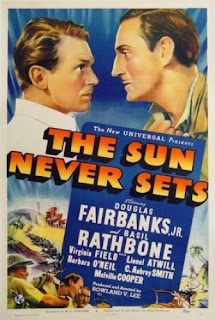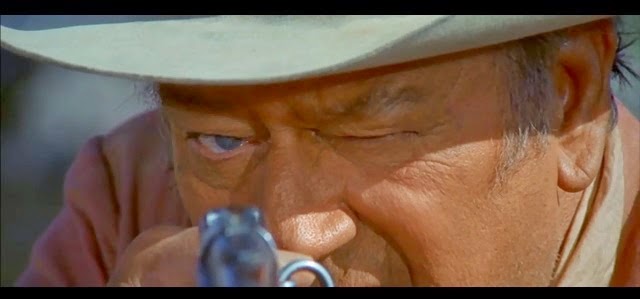I'm going to be in my grumpy old man mode for this post, but I thought 2014 was a pretty mediocre year at the movies, especially for mainstream titles. There were very few movies I was genuinely enthused and passionate about, and the year was further proof that the pleasures of narrative story telling is a lost art.
I saw 112 2014 releases at the theater or on DVD. Despite my current freelance employment status, it's not as expensive as it sounds, as a first-run multiplex just minutes away from me offers $4.50 ticket prices until 6 pm. and $7 in the evenings. I'm also fortunate to have a large number of second-run theaters within a reasonable drive time at $4 a ticket with unlimited refills on any size soda and popcorn. If you don't mind waiting a bit, there's a third run theater chain in nearby Bloomingdale that offers tickets for $1.75 ($1 on Tuesdays). Independent, foreign and art films are shown at the wonderful twice monthly After Hours Film Society at the Tivoli Theater in Downers Grove, which is close enough for me to walk to in the nice weather.
Despite my lack of enthusiasm for much of this year's offering, going to the movies remains a life-long habit and one I don't see quitting any time soon, but I must admit my enthusiasm is waning.
I know I've griped about this before, but I'm rarely out and out entertained at the movies anymore. Most of the comedies are cringe-worthy, to say the least, generating more uncomfortable groans at the gross-out humor on display than any wit or the sense in how to build a gag. I know the days of Lubitsch and Leo McCarey are over, but does it have to be that way?
I remember leaving a packed theater following a week night showing of VICTOR/VICTORIA (1983) and DIRTY ROTTEN SCOUNDRELS (1988) and it seemed as if everyone, strangers all, left the theater nodding happily to each other, grinning ear to ear, like we we were all new best friends who had just enjoyed the world's greatest dinner party. It's been years since I've experienced that coming out of a new movie. That used to be a regular occurrence, but it rarely happens anymore.
Several of the year's biggest hits left me unimpressed. I enjoyed GUARDIANS OF THE GALAXY up to a point, but a final battle scene that seemed to go on for ages put it on the debit side for me.
The third and final Hobbit movie was probably the most tolerable of the three, but that's like being the tallest of three Hobbits. In the long run, it really doesn't mean anything. (The things I see as a Christopher Lee completist. Sigh).
TO KILL A MOCKINGJAY: THE HUNGER GAMES III or whatever this snoozefest is called, bored me to tears. It could be talkiest blockbuster I've ever seen. Now talk is a good thing, but not here, with all line readings bordering on the catatonic. I enjoyed the first movie, and the second to a lesser extent, but this latest one was pure agony.
These movies may play better in marathon viewings with their previous films, but my main complaint with these films, such as DIVERGENT and THE MAZE RUNNER, is they're mainly exposition, building up to the next film in the series. Background has replaced narrative. DIVERGENT was especially guilty of this, with seemingly two hours of exposition and endless training sequences until the main plot kicks in for the remaining 20 minutes which, in turn, will be (somewhat) rectified in the next installment. It's like paying money to see a play but we only get Act 1. These aren't movies anymore, they're guidebooks. These have all been proven successful, so I'm afraid the trend is here to stay for awhile, but it's a trend I don't welcome.
Many of the critical favorites left me somewhat cold as well. BIRDMAN I appreciated for the acting (across the board superb) but the end result I found more exhausting than exhilarating. I'm not a fan of this intense, in your face style of moviemaking, but many are and they got more out of it than I did. I was sincerely glad when it was over.
I should have enjoyed THE GRAND BUDAPEST HOTEL more, but it was a little too cartoony for me, Still, I welcome the chance to see it again, and was puzzled by my reaction to it, as I've enjoyed other Wes Anderson movies and this is the kind of movie I generally like.

When things got dire at the local theater, there was always the joys and pleasures of classic movies. The happiest classic film re-discovery of the year was MR. SKEFFINGTON (1944) starring Bette Davis as Fanny, a vain, silly, stupid, vapid woman who lives her life thinking only of herself, until it's almost too late. With Claude Rains (never better) as the title character, her husband, the aptly named Job, and a stellar supporting cast including Walter Abel, Robert Shayne, John Alexander, Jerome Cowan, and a beautiful performance by Marjorie Riordan as the neglected daughter. The film is artfully directed by Vincent Sherman and scripted by Julius and Philip Epstein of CASABLANCA (1942) fame. Like that film, the array of supporting characters is rich and textured, with each one given a standout scene or line of dialogue. Franz Waxman's musical score is a marvel, and the final scene offers one of his most inspired compositions. Spanning several decades, the movie runs two-and-a-half hours but there's not a wasted scene and when it was over, I could have happily watched it all over again.
Here is my admittedly personal and idiosyncratic picks for the best films of 2014.
BEST OF THE YEAR:

10. A WALK AMONG THE TOMBSTONES – Terrific downbeat detective drama starring Liam Neeson, in one of his best performances. It reminded me of a 1970s crime drama like the great THE FRIENDS OF EDDIE COYLE (1973), where, like Robert Mitchum's performance in that movie, years from now, people will be wondering why Liam Neeson wasn't Oscar nominated. It's the kind of performance that never dates.

9. EDGE OF TOMORROW – This science fiction time bending drama starring Tom Cruise and Emily Blunt was hugely entertaining, in addition to being the wittiest and funniest film of the year - a sad commentary on the state of contemporary film comedy.
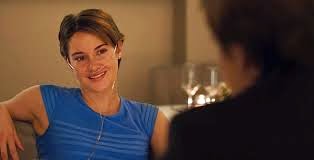
8. THE FAULT IN OUR STARS - Years ago, Shailene Woodley would have likely earned a Best Actress nomination for her portrayal as a young woman battling cancer. But alas, these days it's likely deemed too commercial for consideration, which is a shame as it's one of the best performances of the year. I'm something of a softie (read pussy) and this one really choked me up (to the great amusement of the theater manager I've gotten to know over the years. He likes Randolph Scott, so you know he's an OK guy, in addition to being a fine manager).
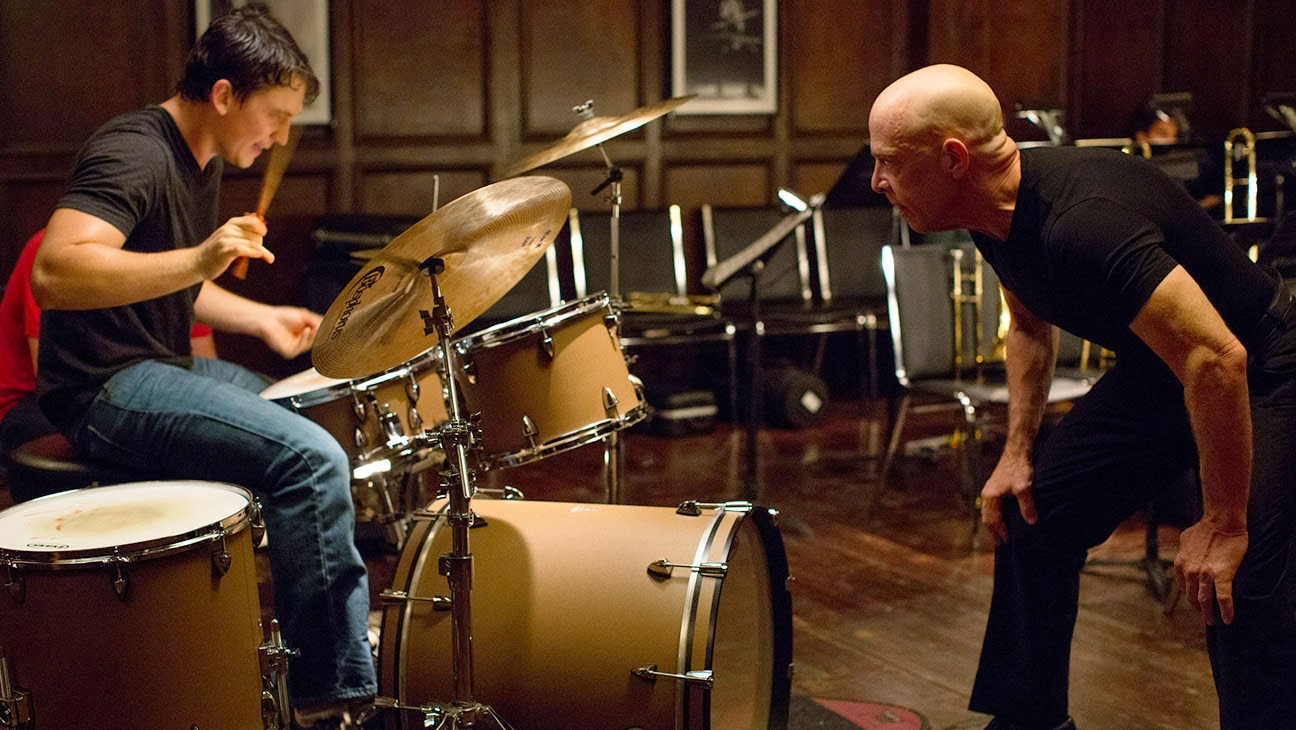
7. WHIPLASH – This film would have been much higher on the list except for a story turn at the end, when J.K. Simmons' teacher character does something so out of character that it almost derailed the film for me. Still, one of the best uses of capturing the excitement of live music on film that I have ever seen.

6. BEGIN AGAIN – Speaking of music on film, this film about independent musicians in New York City was the most charming and likable film of the year, two qualities in woefully short supply this year. The sequence where Mark Ruffalo witnesses Keira Knightley's acoustical guitar performance and imagines in his mind the proper full rock band musical accompaniment was my favorite sequence of the year. I wish more people had seen this one. Speaking of Keira Knightley, she had an absolutely stellar year with this, THE IMITATION GAME and the sadly underseen LAGGIES. I'm looking forward to what she does next.

5. LIFE ITSELF – This documentary on Roger Ebert's life was a wonderful celebration of a life well lived to the fullest.

4. INTO THE WOODS – What a pleasure to hear a musical so well sung and see it so cleverly staged. Great acting and a marvelous production design anchor this adaptation of the Stephen Sondheim musical, the best movie musical in years.
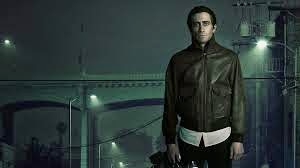
3. NIGHTCRAWLER – Jake Gyllenhall's sociopath news cameraman was the scariest characterization of the year. I had no idea where the story was going, and the portrayal of nighttime Los Angeles repulsed as much as it fascinated.

2. THE IMITATION GAME – I found this Nazi code breaking drama fascinating in its WWII sequences, but could have used one or two less flashbacks of Alan Turing being tormented as a young boy at school. Like last year's SAVING MR. BANKS too many flashbacks sidetrack the narrative. I have also yet to jump on the Benedict Cumberbatch bandwagon, and while I thought he was good, I felt there needed to be a little more spark – a little more zing – in his characterization. The film brightens immeasurably whenever Keira Knightley's character appears.
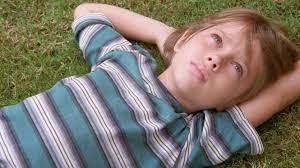
1. BOYHOOD – Yes, I know a cliched pick, but I did find this the most rewarding film of the year, not just for its production (shot over a 12-year period) but for its look at how the big, and especially the tiny, moments in life help form us into the adults we become. A beautifully acted panorama of the human condition which left me emotionally drained, in a good way.
Runner Ups: LUCY, LOVE IS STRANGE, ST. VINCENT, SELMA, THE THEORY OF EVERYTHING.
WORST OF THE YEAR (In Alphabetical Order)
A HAUNTED HOUSE 2 – Not a laugh to be found anywhere.
A MILLION WAYS TO DIE IN THE WEST – It was great to see Monument Valley again in a movie, but otherwise a painfully long and deadening experience. Still there were a few mild chuckles to be had, so it rates ahead A HAUNTED HOUSE 2.
ANNIE – Everything you could possibly want in a musical - grisly musical arrangements and club footed choreography (what little there is of it.), made by people who appear to not want to put any music in their musical. Genuinely unbearable.
DUMB AND DUMBER 2 – From the unending list of unfunny 2014 comedies.
EARTH TO ECHO – One of the few movies I've ever walked out on, just out of sheer boredom. Not an original thought or idea in its tiny space alien head.
EXODUS: GODS AND KINGS: I can't imagine a more uninteresting, passive or whispery Moses than Christian Bale's performance here. Charlton Heston's legacy remains happily secure. I love Biblical and ancient world epics, and for years thought M-G-M's THE PRODIGAL (1955) was the worst of the lot. And then I saw EXODUS: GODS AND KINGS.
GOD'S NOT DEAD – I can't think of a movie where I so agreed with its message yet hated the simplistic, phony and condescending way it was delivered. For me, it's the opposite of the movie version of THE FOUNTAINHEAD (1949). I don't buy Ayn Rand's loony philosophy for a minute, but man, that is one entertaining movie.
I, FRANKENSTEIN – The worst in CGI exhaustion.
LEFT BEHIND – This Rapture drama starring Nicolas Cage was so bad, I considered turning atheist when it was over.
NEIGHBORS – Tied with A HAUNTED HOUSE 2 as the nadir of my 2014 moviegoing.
SEX TAPE – That unfunny 2014 comedy train just added the biggest caboose ever.
TRANSCENDENCE – Probably the best film on this worst list. It had some good ideas and with a different execution could have been a very interesting cautionary science fiction tale.
TRANSFORMERS: AGE OF EXTINCTION – I may have to end my policy of seeing movies filmed in Chicago.
WINTER'S TALE – This time travel romance was a laughably bad fiasco from top to bottom, with all-time worst performances from Russell Crowe, Will Smith and Colin Farrell. It's THE STORY OF MANKIND (1958) of the 21th century.
I'm hoping 2015 will be a good year. There's a new 007 film to look forward to – always a treat, and the new MAD MAX movie FURY ROAD looks jaw droppingly amazing based on the trailer. There's two westerns starring Kurt Russell (yea!), and new movies from Steven Spielberg and Martin Scorsese. And while I'm not a STAR WARS fan, for those millions looking forward to the new one in December I hope it meets or exceeds their expectations.





















